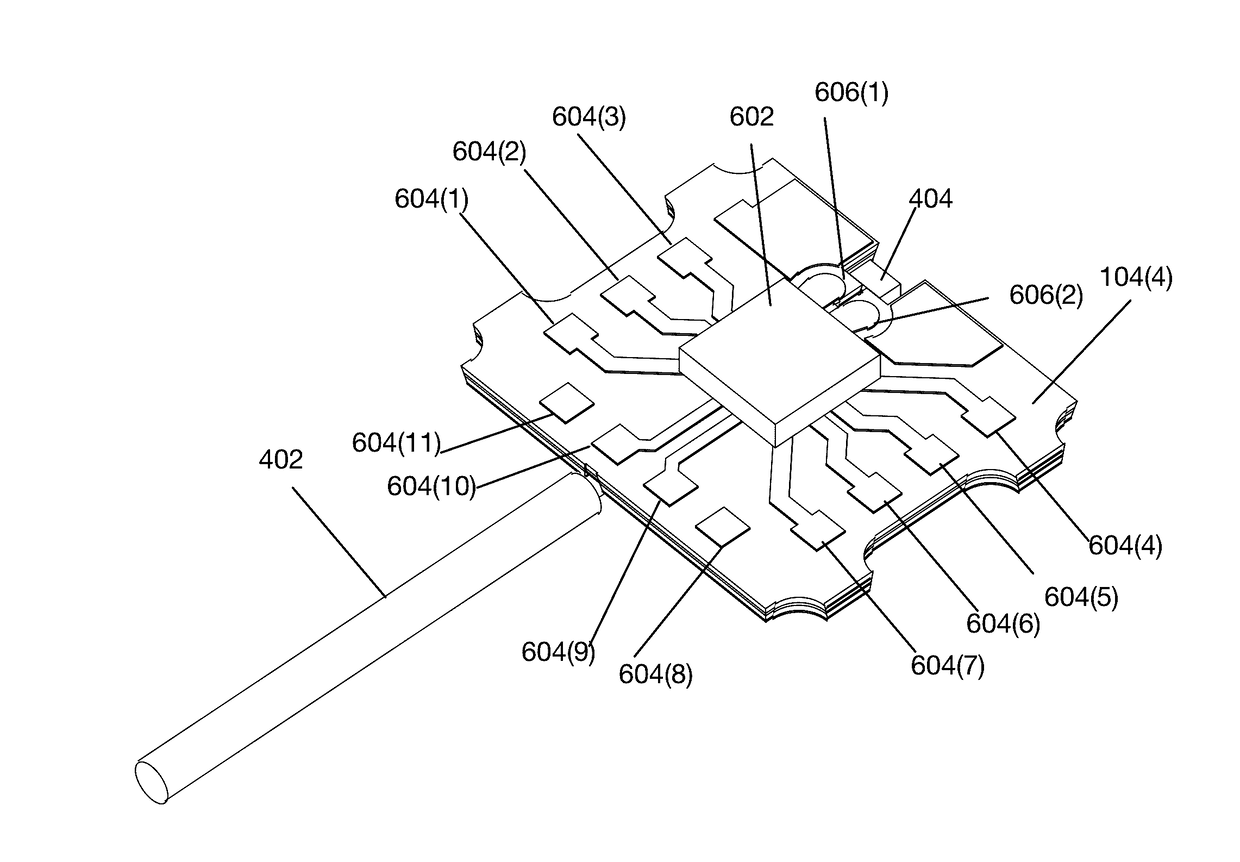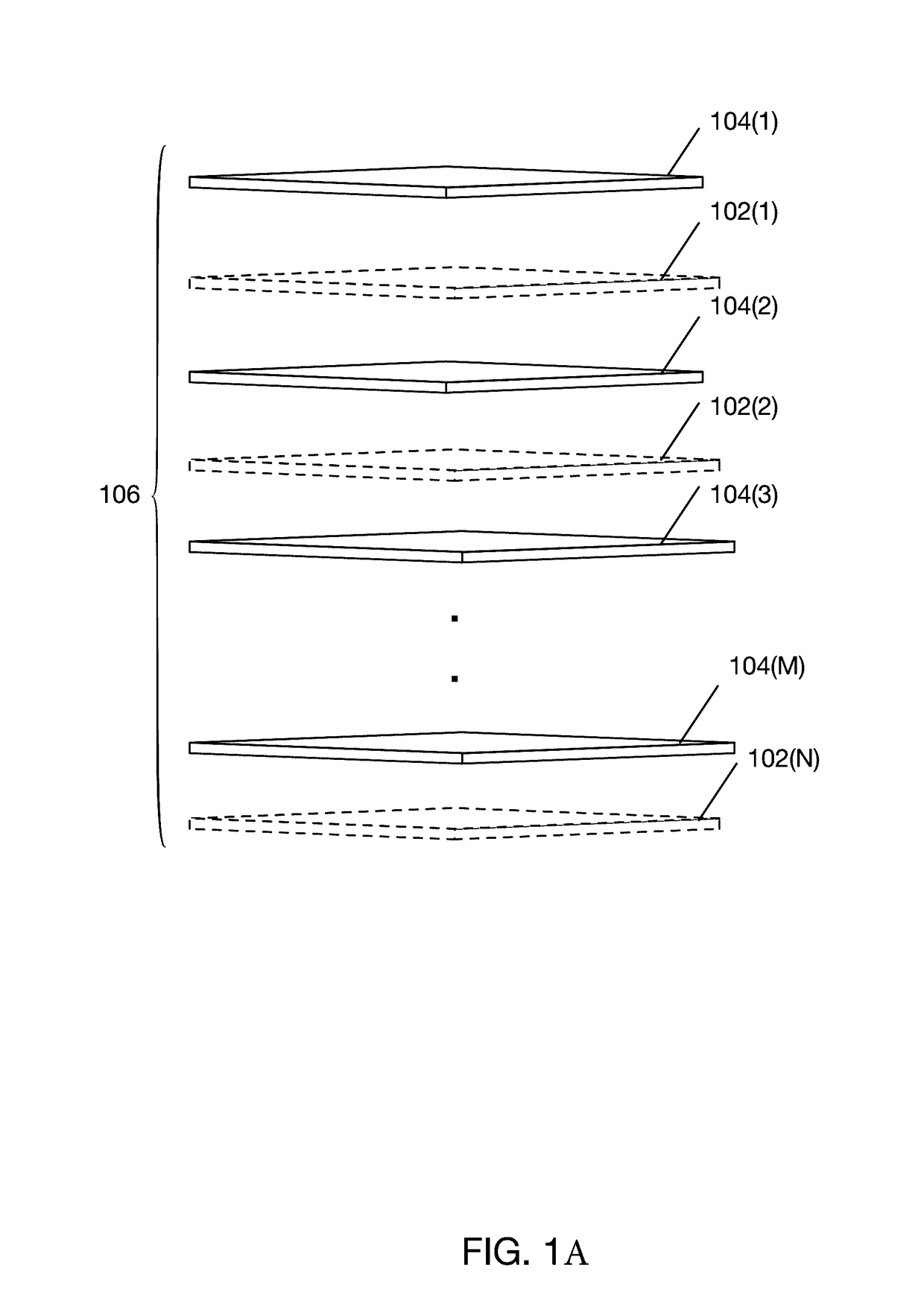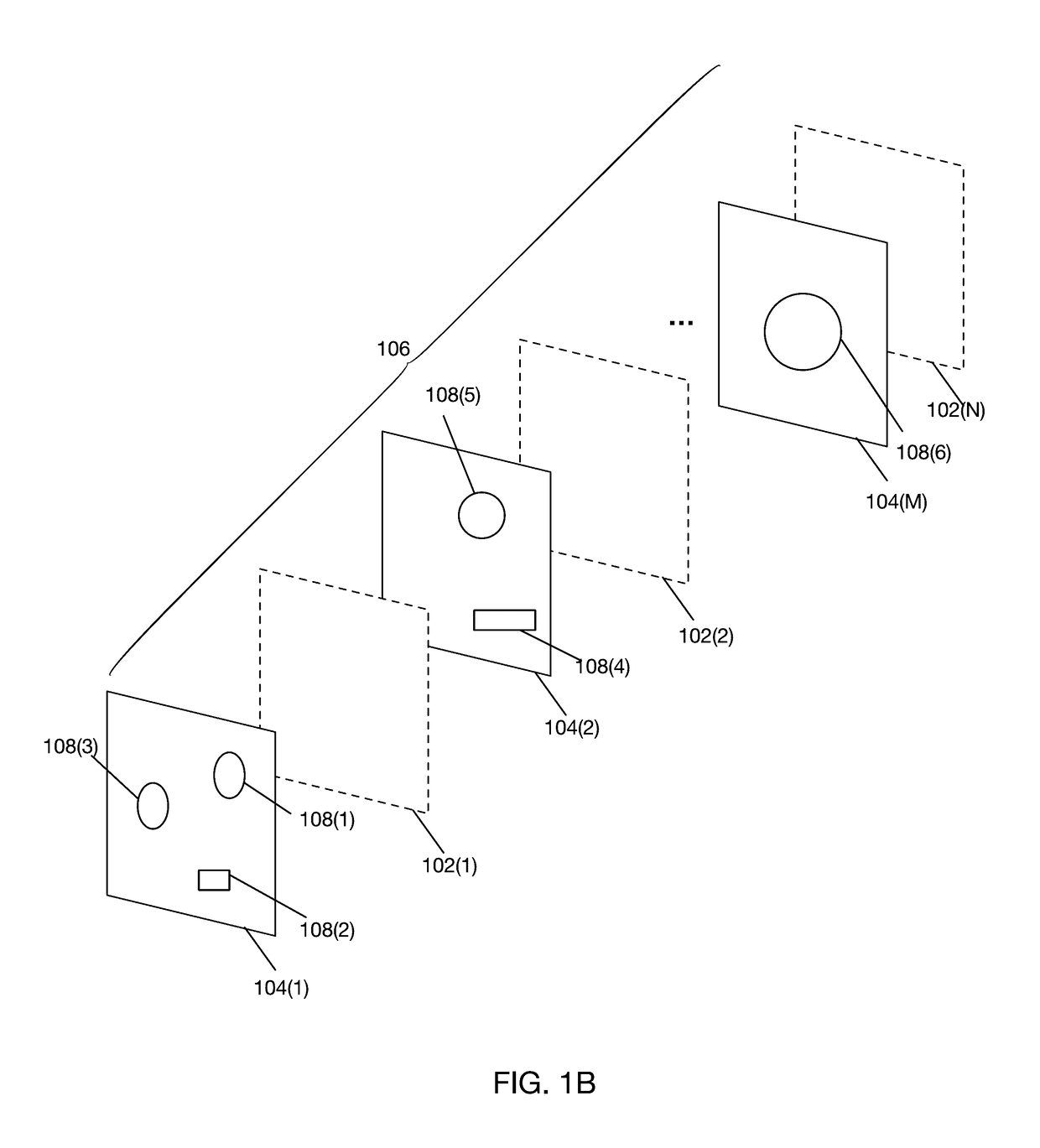Carrier for mounting optical elements and associated fabrication process
a technology of optical elements and carriers, applied in the field of optical components, can solve the problems of not being able to scale well for mass production, not being able to meet the needs of mass production, and being costly and inconvenient to build optical links, etc., to achieve the effect of reducing cross-talk, reducing absorption and/or reflection losses, and increasing electrical design flexibility
- Summary
- Abstract
- Description
- Claims
- Application Information
AI Technical Summary
Benefits of technology
Problems solved by technology
Method used
Image
Examples
Embodiment Construction
Ablation Insusceptible and Ablation Susceptible Layers and Ablation Process
[0028]FIG. 1A shows a stack of alternating ablation susceptible and ablation insusceptible layers for generating an optical mounting structure according to one embodiment. Stack 106 comprises ablation insusceptible layers 104(1)-104(M) and ablation susceptible layers 102(1)-102(N). Ablation insusceptible layers 104(1)-104(M) each may exhibit a respective geometric pattern (not shown in FIG. 1A) and are insusceptible to erosion by an ablation process. According to one embodiment, layers 104(1)-104(M) may be comprised of copper. However, ablation insusceptible layers may be comprised of other materials including, for example, gold, nickel and other metals.
[0029]Ablation susceptible layers 102(1)-102(N) are susceptible to ablation by a laser process. According to one embodiment, ablation susceptible layers 102(1)-102(N) may be comprised of polyimide. However, ablation susceptible layers may be comprised of other...
PUM
 Login to View More
Login to View More Abstract
Description
Claims
Application Information
 Login to View More
Login to View More - R&D
- Intellectual Property
- Life Sciences
- Materials
- Tech Scout
- Unparalleled Data Quality
- Higher Quality Content
- 60% Fewer Hallucinations
Browse by: Latest US Patents, China's latest patents, Technical Efficacy Thesaurus, Application Domain, Technology Topic, Popular Technical Reports.
© 2025 PatSnap. All rights reserved.Legal|Privacy policy|Modern Slavery Act Transparency Statement|Sitemap|About US| Contact US: help@patsnap.com



